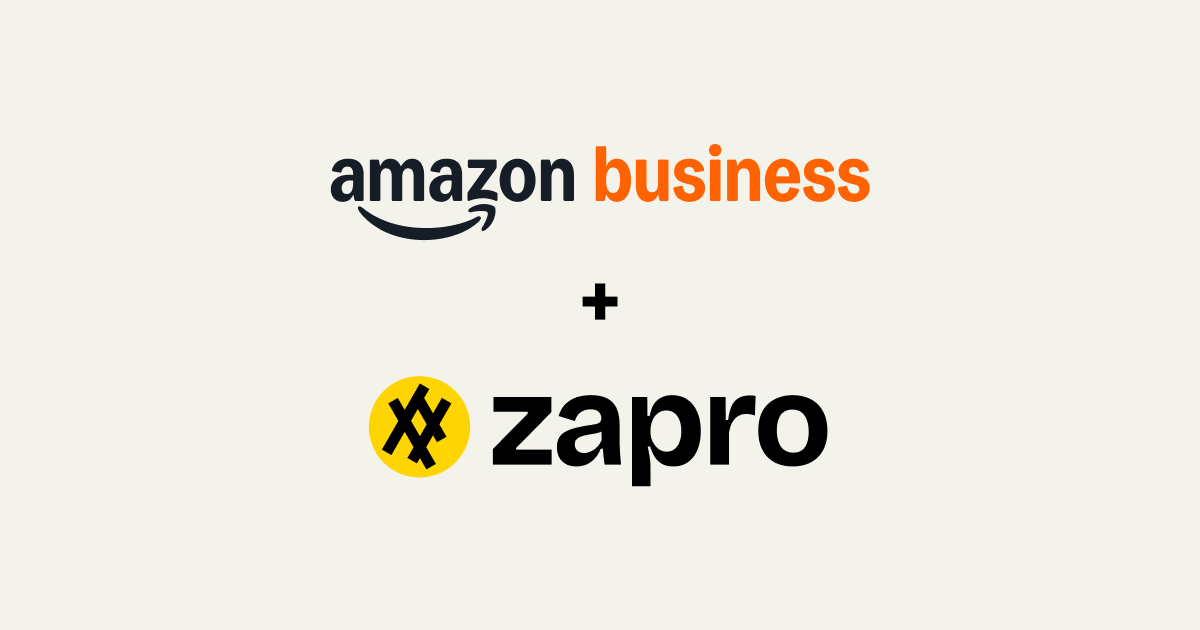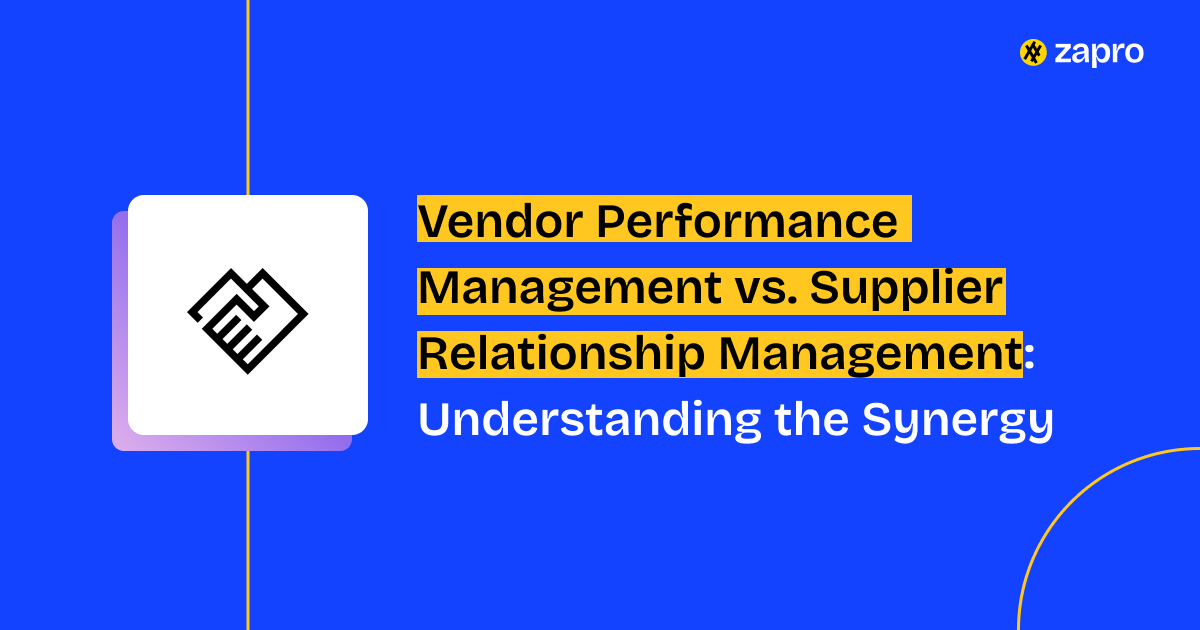The procurement field uses two main supplier management terms which are VPM and SRM. Vendor Performance Management (VPM) and Supplier Relationship Management (SRM). The practice of using VPM and SRM as identical terms represents a major procurement deficiency in modern times.
VPM and SRM are distinct but interconnected fundamentally. Therefore, it becomes essential for us to understand this synergy. This guide clarifies the vendor performance management vs SRM debate and shows how their integrated approach is the secret to unlocking incredible value and driving truly strategic outcomes.
Introduction: Demystifying VPM and SRM
For many, VPM is the quantitative side, and SRM is the qualitative side. That’s a mere simplification. However, in order to make the best use both VPM and SRM disciplines required well-defined processes in place with the right technology under the hood. While the VPM focuses on what happened; the SRM focuses on why it happened and what’s next respectively.
Two Sides of the Same Strategic Coin
Think of it this way: VPM is your accountability mechanism. It ensures you get what you paid for. SRM is your growth mechanism. It ensures the association between the two is poised for tremendous growth, innovation, and long-term success. You cannot have a high-value partnership without any delay having both.

Sixty-two percent of companies practicing supplier relationship management (SRM) use supplier scorecards to measure supplier performance.
– Gartner
What is Vendor Performance Management (VPM)?
The data-driven method of VPM enables organizations to evaluate supplier performance through contractual obligation assessment and service level agreement (SLA) compliance measurement.
Core Focus: Measuring and Optimizing Supplier Deliverables
The main function of VPM exists to maintain operational efficiency. The system determines if suppliers fulfill their delivery commitments according to their stated promises.
Key Activities: KPI Tracking, Scorecards, Reviews, Corrective Actions
- The process of KPI Tracking involves systematic data collection and analysis of On Time Delivery (OTD) and Quality Defect Rates and Cost Variance metrics.
- The system generates vendor ratings through the combination of KPI data into a quantitative assessment tool.
- The vendor conducts quarterly business reviews (QBRs) to evaluate previous performance results.
- The system develops official plans to fix detected problems and tracks their execution to completion.
Main Goal: VPM involves verifying that suppliers fulfill their contractual duties while maximizing operational performance.
VPM maintains compliance standards. The process enforces agreement terms through necessary tactical work which protects against potential dangers and hazards.
What is Supplier Relationship Management (SRM)?
SRM represents the complete organizational approach to handle essential suppliers who drive business success. The approach extends beyond traditional contract management.
Core Focus: Nurturing Strategic Relationships and Long-Term Value
The data-driven method of Vendor Relationship Management helps organizations to evaluate supplier performance through contractual obligation assessment and service level agreement (SLA) compliance measurement.
Key Activities:
- Collaboration: Team up with suppliers to identify common issues that is affecting the process. Have it fixed to boost up operational excellence.
- Innovation: Supplier inputs and perceptive can help coming up with innovative ideas to add value to the product development schedule
- Risk Mitigation: Avoid all sorts of supply chain disruptions by working closely with supplier to create fool-proof strategies for their prevention.
- Strategic Alignment: Supplier needs to come up with plans that are beneficial for expansion.
Key Objective: Building Mutually Beneficial Partnerships for Sustainable Growth
SRM is the mechanism that generates strategic advantageously value. It views the supplier as a true partner, contributing to the overall procurement business strategy.
The Synergy: How VPM and SRM Work Together
The vendor performance management vs SRM debate ends here: they are mutually dependent. You need data (VPM) to manage the relationship (SRM), and you need a good relationship (SRM) to drive performance improvements (VPM).
VPM Informs SRM: Performance Data Guides Relationship Strategy
The data and scorecards from VPM provide you with the necessary information to determine which companies should become your strategic partners. A supplier who delivers exceptional results throughout their performance period should advance to a higher SRM tier which enables them to access more collaborative opportunities and investment resources. The SRM strategy requires immediate focus on support and remediation when VPM results show poor performance.
SRM Enhances VPM: Strong Relationships Drive Performance Improvements
A supplier who feels valued and trusts your organization will provide competitive insights and allocate their top resources to your account while working together on challenging improvement initiatives. The cooperative mindset between suppliers and buyers enables them to tackle complex systemic problems which standard contractual penalties cannot resolve.
Integrated Approach: The Foundation for Strategic Supplier Management
An integrated vendor management approach combines the measurable accountability of VPM with the forward-looking strategy of SRM. This ensures every supplier feedback session is data-driven, yet collaborative, leading to actionable commitments without any delay.
Measure Performance. Build Relationships. Drive Results.

Benefits of an Integrated VPM & SRM Strategy
Aligning vendor performance business objectives through this integrated method yields superior results overall.
1. Enhanced Supplier Collaboration and Innovation
The combination of VPM for performance clarity and SRM for open communication enables suppliers to present their innovative ideas. The suppliers feel assured that their work will receive proper recognition through easy implementation.
2. Proactive Risk Mitigation
The VPM system identifies operational risks through its data flags which show when quality standards decline. The SRM framework enables you to work with suppliers through strategic engagement for creating mutual plans to handle financial and geopolitical risks.
3. Improved Cost Efficiency and Value Realization
The combination ensures not only that you receive the agreed upon price (VPM) but that the relationship yields continuous, strategic advantageously cost reductions and vendor ROI (SRM). This is true value driven procurement.
4. Stronger Contract Compliance and Accountability
By using the VPM scorecard as the basis for strategic supplier meetings, accountability is reinforced. The follow up mechanism, managed through SRM processes, ensures that corrective actions are completed painlessly and efficiently.
Choosing the Right Technology: Platforms that Bridge VPM and SRM
The biggest obstacle to integrated vendor management is siloed technology. If your performance data lives in Excel and your communication logs live in email, the synergy breaks down.
The Importance of a Unified Vendor Management System (VMS)
The best e procurement software must function as a comprehensive unified vendor management system (VMS). This means it must provide a single pane of glass where performance scores (VPM) are viewed side-by-side with communication history, relationship risk, and contract details (SRM). Only this integration allows procurement professionals to comprehend the overall health of the relationship instantly.
Zapro.ai: Unifying Your VPM and SRM Efforts
Zapro.ai is designed specifically to solve the confusion between vendor performance management vs SRM. Our platform bridges the gap by providing:
- Integrated Scorecards: Performance metrics are directly linked to collaborative action plans.
- Centralized Communication: All emails, notes, and meeting agendas are logged directly against the supplier’s profile, providing incredible relationship context.
- Strategic Visibility: Custom dashboards allow you to visualize SRM vs VPM metrics together, showing how a low quality score (VPM) is impacting the overall relationship risk (SRM).
By using Zapro, your team can effortlessly practice integrated vendor management, ensuring every interaction is both data-driven and strategically focused.
Conclusion: Achieving Holistic Supplier Excellence
The debate over SRM vs VPM is over. They are two crucial components of a single, strategic whole. Vendor performance management provides the necessary accountability, while supplier relationship management benefits ensure rapid growth and innovation.
By adopting an integrated vendor management strategy and using a unified digital procurement platform like Zapro.ai, your organization can move into a new era of value driven procurement, achieving holistic supplier excellence and securing strategic advantage for the future.

One Platform. Complete Vendor Intelligence.
Zapro delivers performance insights and relationship tools in harmony.
FAQ:
1. What’s the difference between Vendor Performance Management and Supplier Relationship Management?
VPM focuses on measuring and tracking vendor metrics like delivery times and quality, while SRM emphasizes building strategic partnerships and collaboration. The best results come from integrating both approaches—measuring performance while nurturing relationships. Modern platforms unify these functions for comprehensive vendor oversight.
2. Do I need both VPM and SRM, or can I choose one?
You need both. VPM without SRM becomes transactional and misses innovation opportunities. SRM without VPM lacks accountability. Integrated procurement solutions eliminate the need to choose by combining performance analytics with relationship management tools in a single system.
3. How does technology bridge VPM and SRM?
Advanced platforms provide performance dashboards while facilitating collaboration through shared portals, communication tools, and joint planning features. This creates a complete view—tracking what vendors deliver while strengthening how you work together.
4. Can automated systems really improve supplier relationships?
Yes. Automation handles routine performance tracking, freeing your team to focus on strategic discussions and partnership development. Data-driven insights also make relationship conversations more productive and objective, reducing conflicts and building trust.
5. What should I look for in a platform that handles both VPM and SRM?
Seek solutions offering real-time performance analytics, collaborative workspaces, risk monitoring, and communication tools. The platform should turn data into actionable insights while making vendor interactions seamless—essentially becoming your strategic command center for all vendor activities.
Don’t miss our weekly updates
We’ll email you 1-3 times per week—and never share your information.

 Healthcare
Healthcare Financial Services
Financial Services Technology
Technology Venture Capitalist
Venture Capitalist Chief Procurement Officer
Chief Procurement Officer Chief Financial Officer
Chief Financial Officer




